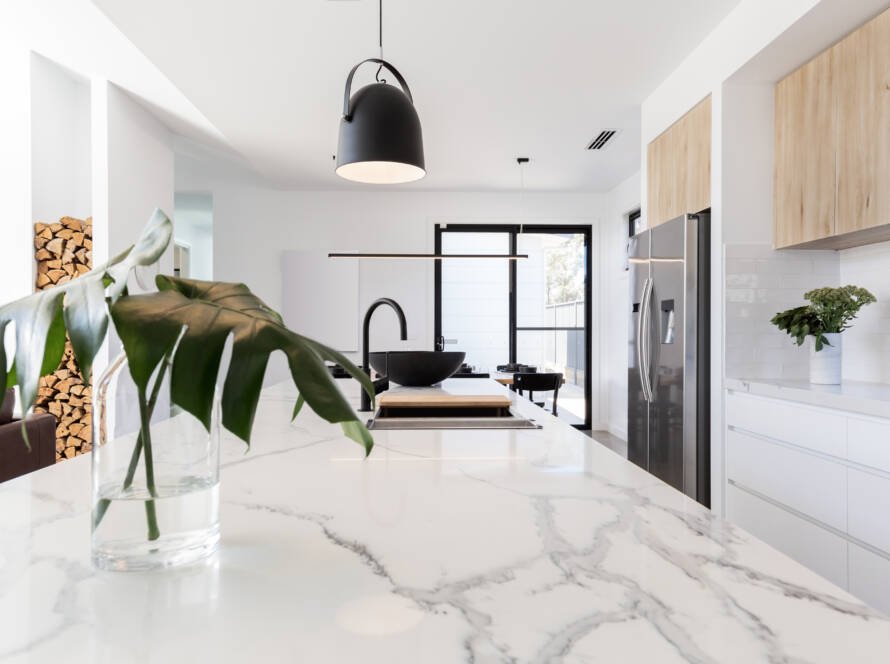Building a custom home is a dream for many—a unique opportunity to create a space that perfectly fits your lifestyle, tastes, and needs. Unlike buying an existing home or selecting from pre-designed models, custom home building allows you to shape every aspect of your new residence. But where do you start, and what does the process entail? Here’s a comprehensive guide to custom home building, helping you navigate this exciting journey from initial concept to move-in day.
1. Defining Your Vision
Envision Your Dream Home:
The first step in building a custom home is to define what you want. Think about your lifestyle, needs, and preferences. Do you envision a modern minimalist design, a cozy cottage, or a luxurious estate? Consider factors like the number of bedrooms, layout, style, and any special features you desire, such as a home office, gym, or custom kitchen.
Create a Wishlist:
Make a list of must-have features and nice-to-haves. This will help guide the design process and ensure that your custom home meets your needs and expectations. Don’t forget to think about future needs as well, like space for growing family or potential home upgrades.
2. Finding the Right Team
Choose a Reputable Architect:
An experienced architect is crucial in turning your vision into a workable design. Look for architects with a portfolio that matches your style and who are known for their creativity and technical expertise. They will help translate your ideas into detailed plans and ensure that your home design is both beautiful and functional.
Select a Custom Home Builder:
Finding a skilled custom home builder is equally important. Look for builders with a strong reputation for quality and reliability. Check their previous work, customer reviews, and ask for references. A good builder will not only construct your home but also guide you through the entire process, from design to completion.
Consider an Interior Designer:
While not always necessary, an interior designer can add significant value. They can help with everything from selecting materials and finishes to coordinating color schemes and furniture placement. If you have a particular vision for your home’s interior, an interior designer can help bring it to life.
3. Designing Your Home
Collaborate on Blueprints:
Work closely with your architect to develop blueprints that match your vision. This stage involves designing the layout, choosing materials, and incorporating all the features you want. Be prepared for several rounds of revisions as you refine the design to ensure it meets your expectations.
Consider Functionality and Flow:
As you design your home, think about the functionality of each space. Ensure that the layout promotes a good flow between rooms and that spaces are practical for your daily life. Consider aspects like storage, natural light, and how the design will accommodate your lifestyle.
4. Navigating Permits and Approvals
Secure Necessary Permits:
Building a custom home requires various permits and approvals from local authorities. Your builder or architect will typically handle this process, but it’s essential to ensure all necessary permits are secured before construction begins. This includes zoning permits, building permits, and any other local or environmental approvals.
Understand Regulations:
Familiarize yourself with local building codes and regulations. These rules are designed to ensure safety and quality in construction and will affect everything from structural integrity to energy efficiency.
5. Breaking Ground
Site Preparation:
Once permits are in place, the site preparation begins. This involves clearing the land, grading, and setting up utilities. Depending on your location, this may also include excavation for foundations or landscaping work.
Foundation Work:
The foundation is a critical part of your home’s structure. Depending on the design, this could involve pouring concrete footings, constructing a basement, or creating a crawl space. A solid foundation ensures the stability and durability of your home.
6. Constructing Your Home
Framing and Shell:
With the foundation in place, framing begins. This is when the structural framework of your home is erected, including walls, floors, and the roof. This stage gives you a tangible sense of the layout and scale of your future home.
Interior and Exterior Finishes:
Once the shell is complete, work progresses to installing windows, doors, and exterior siding. Inside, electricians and plumbers install wiring and plumbing systems, followed by drywall installation. The final touches include painting, flooring, and the installation of fixtures and cabinetry.
7. Finalizing and Moving In
Inspection and Quality Check:
Before you move in, a final inspection ensures that everything is up to code and meets your standards. This is your opportunity to address any last-minute details or corrections.
Final Walkthrough:
Do a thorough walkthrough of your new home with your builder to ensure that everything is as expected. Check for any issues or adjustments that need to be made before you officially move in.
Prepare for Move-In:
Once everything is in order, it’s time to move in and start enjoying your new custom home. Unpack, decorate, and make the space your own.
Conclusion
Building a custom home is a rewarding journey that allows you to create a space that is uniquely yours. From defining your vision to selecting the right team and navigating the construction process, each step is crucial in bringing your dream home to life. By working closely with skilled professionals and staying involved in every stage of the process, you’ll ensure that your custom home meets your expectations and provides a beautiful, functional space for years to come. Enjoy the process and celebrate the creation of a home that truly reflects your personal style and lifestyle.



